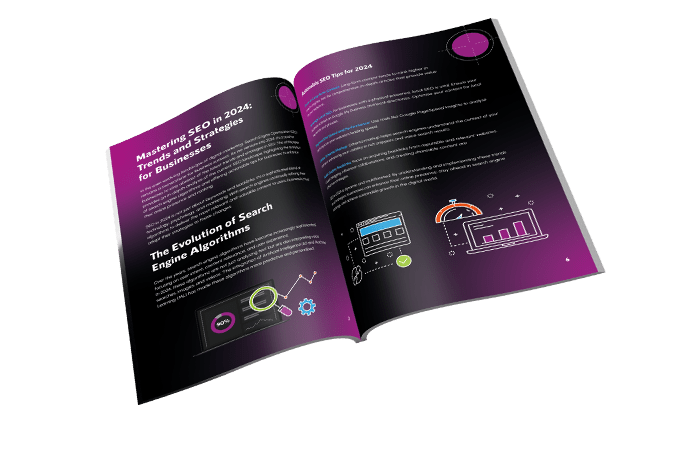News
Marketing Statistics – Why, How & When To Review Your Reporting
As a marketer, your job has multiple parts of it. From planning to executing campaigns and creating content, the overlooked part of the job is reporting and statistics. This is an important part of marketing because it helps you measure how your campaigns are performing in the market and allow you the chance to make changes as needed.
Why should you review your reporting?
If you’re putting in the work to make your marketing campaigns yield successful results, how will you know that without your reports? By taking the time to sit down and look over your reports, it’s a way to ensure that you’re getting the most return for the effort you’re putting into your campaigns. If you’re finding that certain aspects of your campaigns aren’t working on particular websites, this then gives you the opportunity to change courses and make the changes that need to happen to make them successful.
Understanding your reports
KPI: This stands for Key Performance Indicator. Klipfolio describes this as the measurable value that demonstrates how effectively a company is achieving key business objectives. They’re used at multiple levels to evaluate the success of reaching targets. You define your KPI by identifying what targets you want to meet, for example, a 20% higher engagement rate, and then using your data from your reports to ensure you’re achieving those targets. This article will help you determine which marketing KPIs you should be tracking.
Google Analytics is one of the best ways to measure your progress and specifically to determine your conversion rate. Your conversion rate is the percentage of visitors to your website that complete a desired goal, for example, purchasing your product. Google has an array of helpful topics on conversion and how to measure it, one of which can be found here.
Where to start?
This article by Hubspot (a popular Customer Relationship Management [CRM] software) details exactly why and how to set up a marketing report, but let’s summarise:
- Title: What are you analyzing? Make sure your intent is clear in case you need to share this report with anyone else.
- Reporting period: This can be over a few days, months, or years. This allows you to compare performance to past reports.
- Summary: This should reflect the key points of your report. That way, anyone reading it knows what they will find within your report.
You can choose to write your report on your individual KPIs that you’ve set up for yourself or on any other part of your marketing strategy. This can be your target audience, your market, or your product. It’s helpful to have different reports for each KPI to keep them easily separated and identifiable. You can create a reporting template to make this easier for you and your team to make multiple reports quickly and efficiently. Make sure this template is easily readable for both your colleagues and the intended audience who will be receiving the report.
When you can, include graphs and charts within your reports to help add a visual element that also adds credibility to your information. This can make it easier to review it later on if you need to.
So now with all of your data in front of you and your conversion percentage, how do you know if it’s actually good? Because marketing reports inform decisions, it’s important to know what you’re looking at, so you know which decisions to be made.
If the data shows you’re hitting your KPIs efficiently within your given reporting period, then you know your campaigns are working. But if you’re falling short in some aspects, then it’s time to re-evaluate your strategy and make some changes. If you need to focus on conversion rates, make sure your website is user-friendly and easy to navigate. Make sure your funnel leads them from information to the product to check-out successfully. If you’d like more users to sign up for your newsletter, make sure it’s visible where they can put their email in so they can receive it and the benefits they’ll get from signing up for it. Offering the customer, a percentage off of the product if they sign up for your newsletter can be a great way to get new sign-ups.
When to review your reports?
This depends on the type of reports you’re doing. It’s most helpful to report month-to-month as this will help you break down your year in easy to identify sections. You can see how you perform in each month, season, or around which holiday. If you do this and see you’re struggling to convert in the summer months, this can help drive change with how your website is set up and which marketing campaigns to run during which months. For example, if you don’t have much traffic coming through in the summer, it can be helpful to set aside some marketing budget to push paid advertising or SEO during these months. Then, next year, you can easily compare the reports to see if your efforts are working.
Lastly – use a reporting dashboard. We offer a dashboard that’s easy and transparent for you to navigate. If you don’t know where to start or how to monitor your marketing efforts, download our dashboard. We make it easy for you to input and see your KPIs as well as visual reports to make sure your campaigns are working successfully.
Custom Marketing Dashboard
Streamline campaign monitoring in one single, intuitive reporting interface. Our clever dashboard collects insights from all your marketing channels, including social media, PPC, email marketing, call tracking, customer reviews, daily SEO rankings and much more.
In conclusion, marketing reporting is often overlooked, but it’s an incredibly important part of marketing campaigns. They help you see the success of your campaigns and show you where your downfalls may be. Whether you need to pick up paid campaigns during certain parts of the year or need to rework parts of your website, the data will be available for you to make these informed decisions.





The Ultimate Social Media Guide
With the ever-growing power of social media, we use the latest techniques, video, and animation software to craft eye-catching social media assets that make your brand pop. Our designers, wielding Adobe Creative tools, create distinctive animations and graphics to illuminate your brand story and highlight your products or services. Want a unique design? No problem – we also offer bespoke designs to match your brand aesthetic.